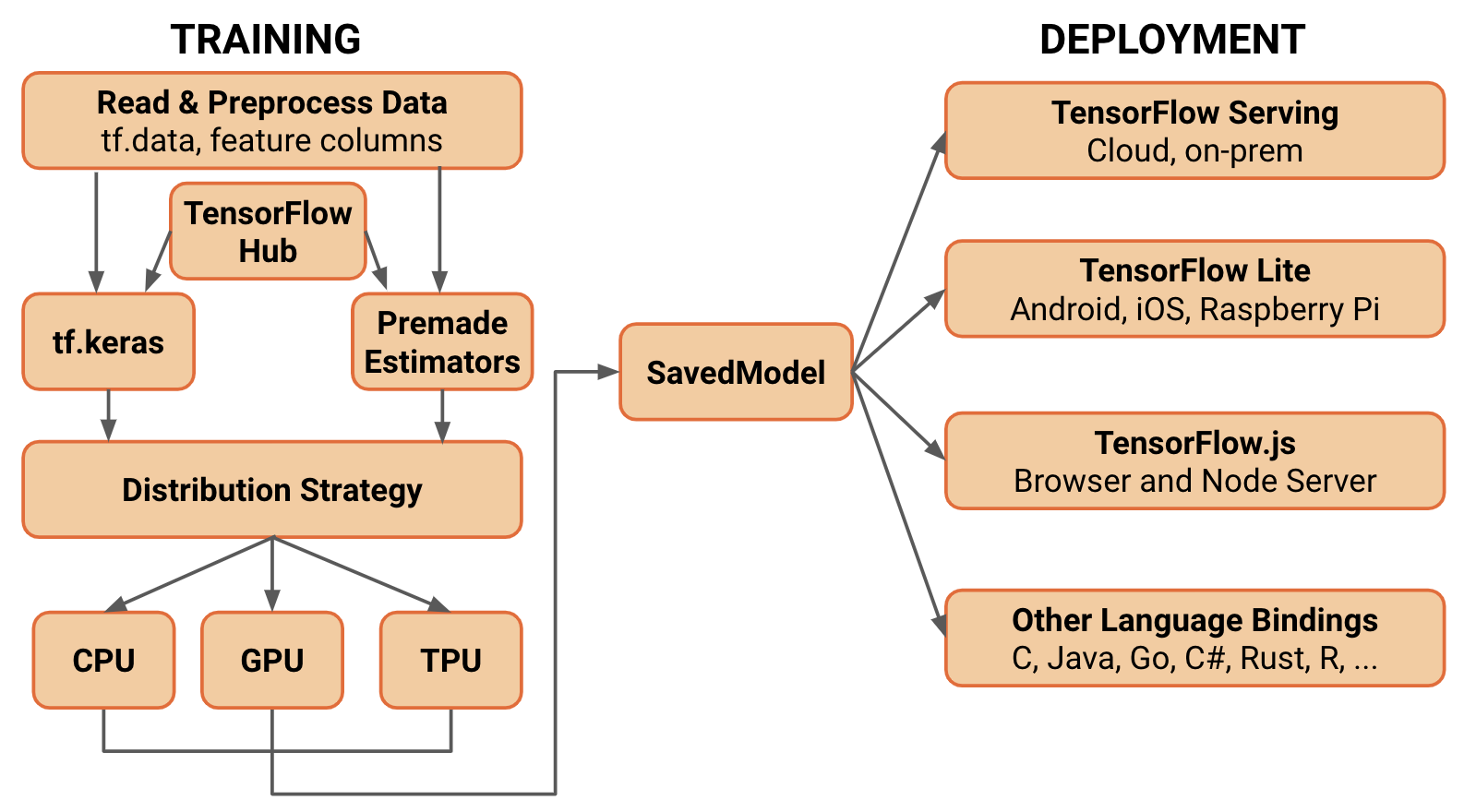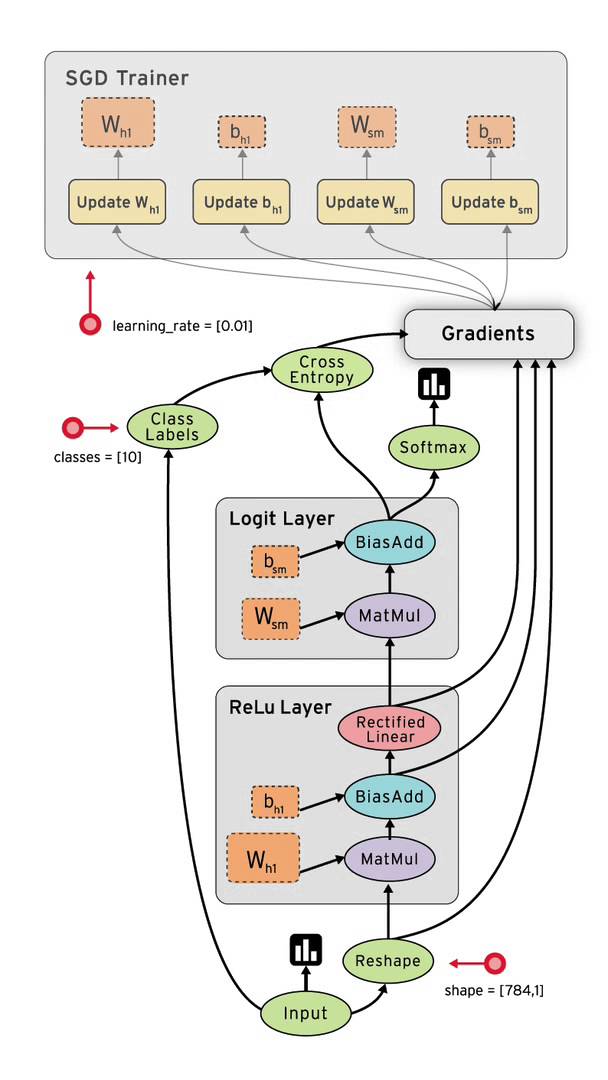TensorFlow is an open-source, end-to-end platform for creating machine learning applications. It is a symbolic math library that uses dataflow and differentiable programming to perform various tasks.
| It focuses on training and inference of deep neural networks, but it has the power to do much more than that. You can build other machine learning algorithms on it such as decision trees or k-Nearest Neighbors. |

|
| TensorFlow allows developers to create machine learning applications using various tools, libraries, and community resources. It is an open source software library for numerical computation using dataflow graphs. Nodes in the graph represents mathematical operations, while graph edges represent multi-dimensional data arrays (aka tensors) communicated between them. The flexible architecture allows you to deploy computation to one or more CPUs or GPUs in a desktop, server, or mobile device with a single API. It’s built to be scalable, by changing internal data representation to tensors (aka multi-dimensional arrays). Building a computational graph can be considered as the main ingredient of TensorFlow. |

|
|
“Simple can be harder than complex: You have to work hard to get your thinking clean to make it simple. But it’s worth it in the end because once you get there, you can move mountains.” ― Steve Jobs |